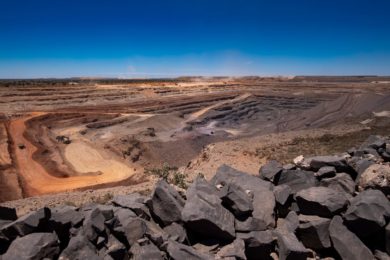Aveng has announced that its South African based contract mining subsidiary, Moolmans, has entered into a new five-year contract with its long-standing client Tshipi é Ntle. The new contract is valued at approximately ZAR7 billion (over $400 million). This contract award will result in significant investment in equipment, people, processes and systems and Aveng says is firmly aligned with its goal of ensuring a fit-for-purpose organisation capable of sustainable and profitable long-term growth.
Moolmans, with support of Tshipi é Ntle, has placed an order for 16 new Cat 785D trucks, five of which are already on site and awaiting commissioning. The remaining 11 trucks are expected to be fully operational by June 2023. Additionally, two new Liebherr excavators and four new bulldozers are on back order, together with an existing Liebherr excavator undergoing a full OEM refurbishment.
Aveng said: “The award of this contract signifies a key strategic milestone for Moolmans, which is actively selecting and entering into long-term and commercially viable contracts, coupled with the necessary investment in Heavy Mining Equipment. Moolmans continues to pursue other opportunities in Sub-Saharan and West Africa.”
Tshipi é Ntle mines manganese in the Northern Cape province of South Africa. Moolmans has been providing contract mining services to Tshipi é Ntle since 2011. It operates one of the largest manganese mineral assets in the world. The Tshipi Borwa mine is a leading manganese ore producer with an established and efficient export infrastructure, including a 8 km private rail siding loop, and one of the fastest load-out stations in the Kalahari region with direct access to the Transnet rail link and seven terminals across four ports in South Africa.
Tshipi Borwa is an open-cast mine that operates through drill-and-blast and load-and-haul mining techniques. At the start of the mining process, the topsoil is removed and stockpiled in a separate area for later use during the rehabilitation phase. The various layers of the Kalahari formation are removed, followed by the harder banded ironstone, dolomite and manganese layers which are part of the Hotazel formation. Once exposed, the manganese ore is drilled, blasted and loaded onto trucks and hauled to the primary crusher and onward processing facilities.










